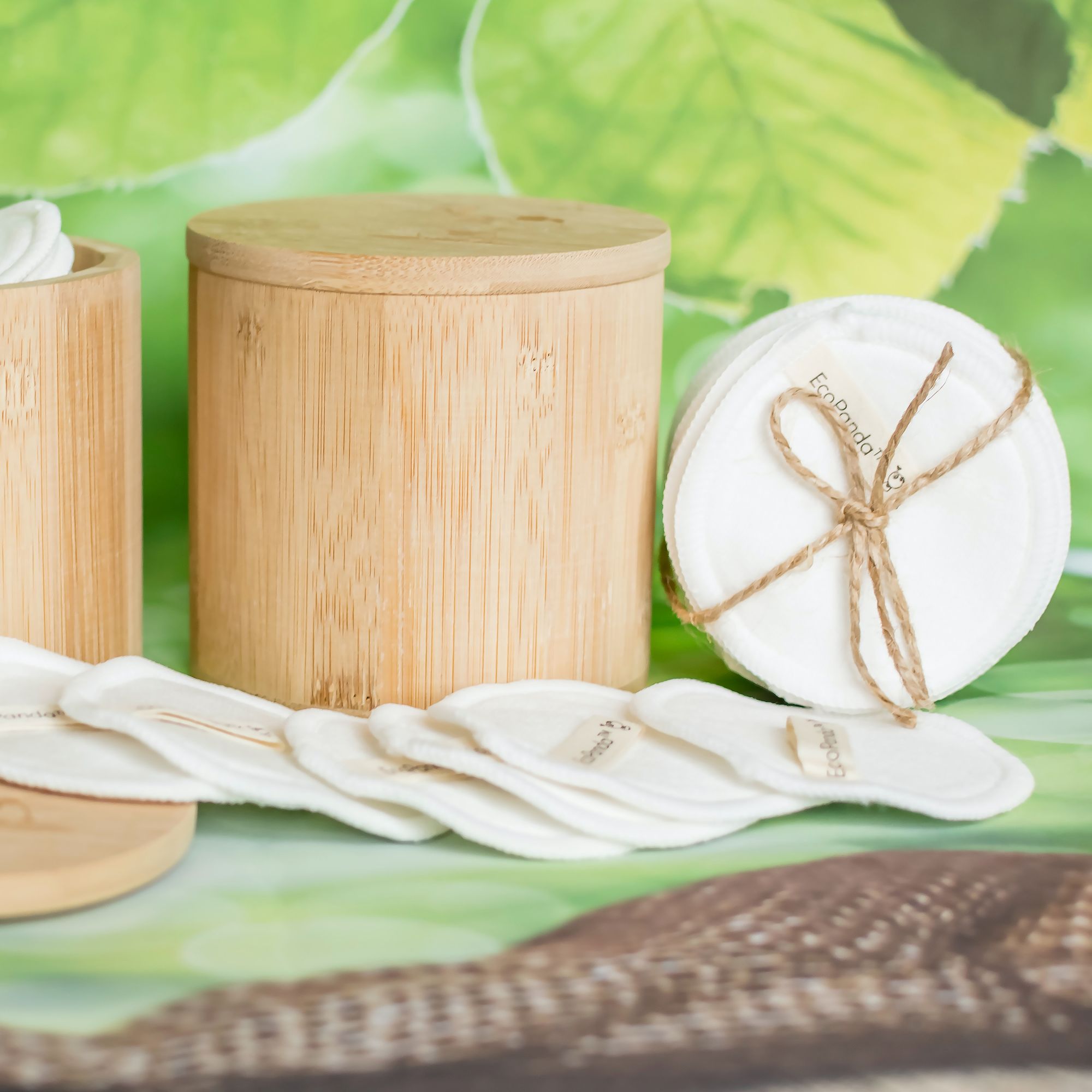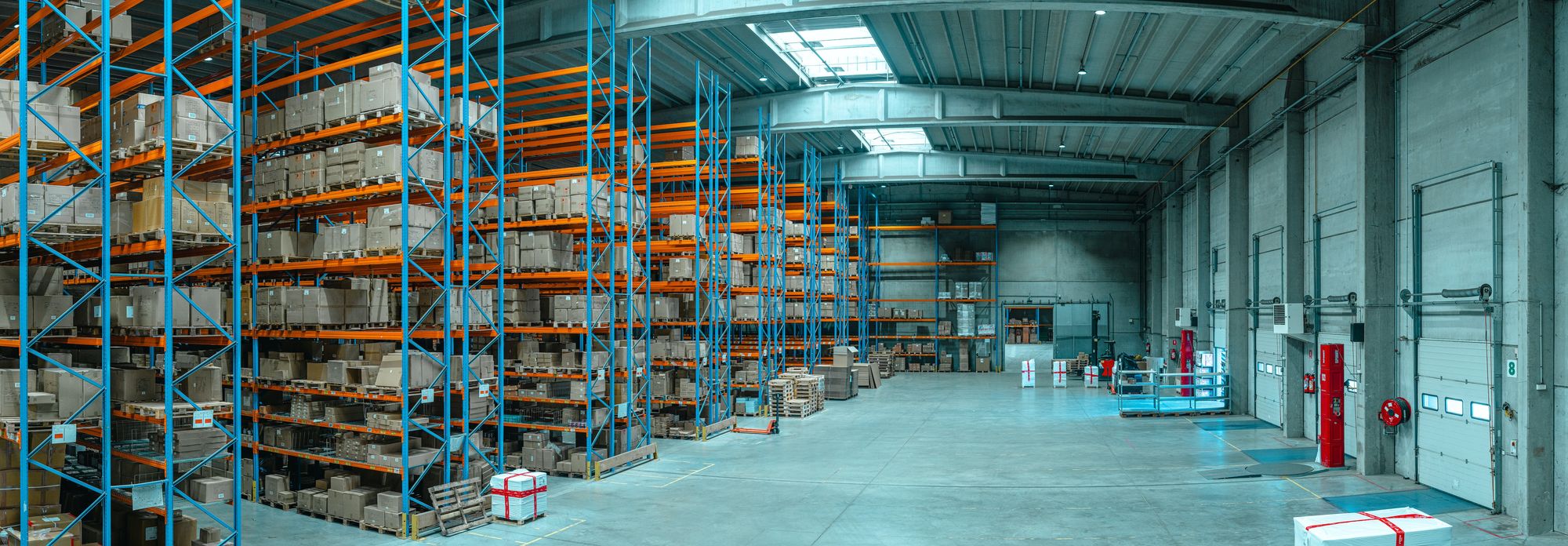Sustainable manufacturing practices are becoming increasingly important to consumers. A survey conducted by Nielsen found that 73% of global consumers are willing to pay more for sustainable products, and 81% of millennials expect companies to make a commitment to sustainability.
As sustainability becomes an increasingly important issue in today's world, the need for environmentally friendly materials has become more urgent than ever. Traditional manufacturing processes have been known to have negative impacts on the environment, but there are innovative solutions emerging that offer a sustainable alternative. One of these solutions is biodegradable wood, which has the potential to revolutionize the manufacturing industry.
Biodegradable wood is a type of engineered wood product that is made from natural wood fibers and biodegradable resins. It offers a range of properties that make it an ideal material for sustainable manufacturing, such as its biodegradability, low carbon footprint, and recyclability.

Unlike traditional wood products, biodegradable wood does not contain any harmful chemicals, and it is produced using sustainable forestry practices.
In this article, we will explore the potential of biodegradable wood for sustainable manufacturing. We will examine its properties, production process, and applications, as well as its advantages and limitations. We will also discuss the challenges that need to be overcome for biodegradable wood to become a viable alternative to traditional materials, and the future prospects of this innovative material.
With the potential to reduce waste, promote sustainability, and support the circular economy, biodegradable wood has the power to transform the manufacturing industry and create a more sustainable future.
- What is Biodegradable Wood and Sustainable Manufacturing?
- Biodegradable Wood: Properties and Production
- Sustainable Manufacturing and Biodegradable Wood
- Applications of Biodegradable Wood in Sustainable Manufacturing
- Challenges and Limitations of Biodegradable Wood
- Future Prospects of Biodegradable Wood
- How can MRP Systems Help Achieve Sustainable Wood Manufacturing?
- How can Deskera Help You?
- Key Takeaways
- Related Articles
What is Biodegradable Wood and Sustainable Manufacturing?
Biodegradable wood is a type of engineered wood product that is made from natural wood fibers and biodegradable resins. It is designed to degrade over time through natural processes, making it an environmentally friendly alternative to traditional wood products that can take hundreds of years to decompose.
Sustainable manufacturing refers to the process of producing goods in a way that minimizes negative environmental impact and promotes long-term ecological balance. This can involve using renewable energy sources, reducing waste, and using environmentally friendly materials and production methods.
The goal of sustainable manufacturing is to meet the needs of the present without compromising the ability of future generations to meet their own needs.
Biodegradable wood is a material that fits well within the concept of sustainable manufacturing. It is produced using sustainable forestry practices and does not contain any harmful chemicals.
Additionally, it has a lower carbon footprint than traditional wood products and can be recycled or biodegraded at the end of its life cycle. By using biodegradable wood in manufacturing processes, companies can reduce waste, promote sustainability, and support the circular economy.
Purpose of the Article
The purpose of this article is to explore the potential of biodegradable wood for sustainable manufacturing. The article aims to provide a comprehensive overview of biodegradable wood, including its properties, production process, and applications. It will also examine the need for sustainable manufacturing and how biodegradable wood fits into this concept.
The article will discuss the advantages and limitations of biodegradable wood and address the challenges that need to be overcome for it to become a viable alternative to traditional materials. Additionally, the article will explore the future prospects of biodegradable wood in sustainable manufacturing, including potential advancements in technology and increased demand.
By providing a detailed analysis of biodegradable wood and its potential for sustainable manufacturing, the article aims to inform and educate readers about this innovative material. It also aims to promote awareness of the importance of sustainable manufacturing practices and the role that biodegradable wood can play in creating a more environmentally friendly future.
Biodegradable Wood: Properties and Production
Biodegradable wood is a sustainable and environmentally friendly alternative to traditional wood products. It is produced using natural wood fibers and biodegradable resins, which makes it an ideal material for sustainable manufacturing. The properties of biodegradable wood can be optimized for different applications and it has a lower carbon footprint than traditional wood products.
Biodegradable wood can be recycled or biodegraded at the end of its life cycle, which reduces waste and promotes sustainability in the manufacturing industry. The demand for sustainable materials, such as biodegradable wood, is on the rise, and it has the potential to replace non-biodegradable composite materials and plastic products in certain applications.
Properties of Biodegradable Wood
Biodegradable wood, also known as wood-plastic composites (WPCs), has several properties that make it an ideal material for sustainable manufacturing.
- Biodegradability: Biodegradable wood can be broken down by microorganisms, which makes it an environmentally friendly alternative to traditional wood products.
- Durability: Biodegradable wood is durable and resistant to moisture, rot, and insects, which makes it a long-lasting material for outdoor applications.
- Versatility: Biodegradable wood can be engineered to have specific properties for different applications, such as strength, stiffness, and color.
- Low density: Biodegradable wood has a lower density than traditional wood, which makes it lighter and easier to handle.
- Thermal stability: Biodegradable wood has good thermal stability, which makes it suitable for use in high-temperature applications.
- Low maintenance: Biodegradable wood requires less maintenance than traditional wood products, which reduces the need for harmful chemicals and reduces the environmental impact.
- Recyclability: Biodegradable wood can be recycled at the end of its life cycle, which reduces waste and promotes sustainability in the manufacturing industry.
Overall, the properties of biodegradable wood make it a versatile and adaptable material for sustainable manufacturing, with a wide range of applications in industries such as construction, furniture making, packaging, and automotive manufacturing.
Production Process of Biodegradable Wood
The production process of biodegradable wood involves the combination of natural wood fibers with biodegradable resins to create a composite material. The following are the steps involved in the production process:
- Raw Materials: The first step in the production process is to gather the raw materials, which include natural wood fibers and biodegradable resins. The wood fibers can be sourced from various sources such as sawdust, wood chips, or wood flour, and the biodegradable resins can be made from materials such as starch, cellulose, or polylactic acid (PLA).
- Mixing: Once the raw materials have been gathered, they are mixed together in a blender or extruder. The wood fibers and biodegradable resins are mixed in precise proportions to achieve the desired properties of the final product.
- Heating and Extrusion: The blended mixture is then heated and extruded into the desired shape and size. The extrusion process involves passing the mixture through a die that shapes the material into a specific form, such as a plank or board.
- Cooling and Cutting: The extruded material is then cooled and cut to the desired length. The cooling process allows the material to solidify and harden, while the cutting process shapes it into the desired size.
- Finishing: The finished biodegradable wood product can be treated with coatings or finishes to improve its appearance, durability, and resistance to moisture and UV radiation.
Thus, the production process of biodegradable wood is relatively simple and straightforward, and it can be scaled up for mass production. The use of sustainable materials and the biodegradability of the final product make it an ideal material for sustainable manufacturing.
Sustainable Manufacturing and Biodegradable Wood
Biodegradable wood, as a sustainable and environmentally friendly alternative to traditional wood products, offers significant potential for sustainable manufacturing. By incorporating biodegradable wood into their production processes, manufacturers can reduce their carbon footprint, increase product lifespan, and improve end-of-life disposal options.
With the demand for sustainable materials and environmentally conscious practices on the rise, the use of biodegradable wood in manufacturing has the potential to revolutionize the industry, creating a more sustainable future for both businesses and the environment.
Need for Sustainable Manufacturing
The need for sustainable manufacturing arises from the growing concerns over the environmental impact of traditional manufacturing practices. Industrial processes contribute significantly to greenhouse gas emissions, resource depletion, and pollution, which can have adverse effects on both the environment and human health.
Sustainable manufacturing aims to address these issues by incorporating environmentally conscious practices, such as reducing waste and emissions, using renewable resources, and adopting closed-loop systems that minimize the use of virgin materials.
In addition to environmental benefits, sustainable manufacturing can also lead to economic benefits, such as increased efficiency, reduced operating and manufacturing costs, and improved product quality. As consumers and governments become more aware of the need for sustainable practices, the demand for sustainable manufacturing is increasing, and it has become a critical aspect of modern industrial processes.
Biodegradable Wood as a Sustainable Alternative
Biodegradable wood, also known as wood-plastic composites (WPCs), is a sustainable alternative to traditional wood products. Traditional wood products, such as lumber and plywood, contribute to deforestation and have a significant impact on the environment.
In contrast, biodegradable wood is made from a combination of natural wood fibers and biodegradable resins, making it a more environmentally friendly option.
Biodegradable wood offers several benefits as a sustainable alternative to traditional wood products. Firstly, it is biodegradable, which means it can be broken down by microorganisms and does not accumulate in the environment. Secondly, it is made from recycled materials, reducing the need for virgin resources.
Thirdly, it requires less maintenance than traditional wood products, reducing the need for harmful chemicals and minimizing the environmental impact. Finally, biodegradable wood has a longer lifespan than traditional wood products, reducing the need for frequent replacements and conserving resources.
Overall, the use of biodegradable wood as a sustainable alternative to traditional wood products has significant potential to reduce the environmental impact of manufacturing and promote a more sustainable future.
Advantages of Biodegradable Wood in Sustainable Manufacturing
The advantages of biodegradable wood in sustainable manufacturing are numerous, and they make it an ideal material for environmentally conscious businesses. Here are some of the main advantages:
- Environmentally friendly: Biodegradable wood is made from renewable and sustainable resources and is biodegradable, meaning it will not harm the environment when it is discarded. This makes it a perfect choice for sustainable manufacturing.
- Durability: Biodegradable wood is a durable material that can withstand harsh conditions and is resistant to water, rot, and insects. This means it has a long lifespan, reducing the need for frequent replacements.
- Versatility: Biodegradable wood can be molded into various shapes and sizes and can be used in many applications. It can be used for furniture, decking, flooring, and construction, among other things.
- Low maintenance: Biodegradable wood requires little maintenance, which means fewer chemicals and resources are needed for upkeep.
- Cost-effective: While the initial cost of biodegradable wood may be higher than traditional wood products, the longer lifespan and low maintenance requirements can save money in the long run.
Applications of Biodegradable Wood in Sustainable Manufacturing
Biodegradable wood, a sustainable and environmentally friendly material, has significant potential in various applications within sustainable manufacturing. From furniture to construction, biodegradable wood offers numerous advantages, including durability, versatility, low maintenance, and cost-effectiveness.
As a renewable and biodegradable resource, biodegradable wood can reduce the environmental impact of manufacturing and promote a more sustainable future. Its ability to be molded into various shapes and sizes allows for creativity in design, while its long lifespan reduces the need for frequent replacements.
Overall, the applications of biodegradable wood in sustainable manufacturing hold great promise for a more eco-friendly and efficient industrial sector.
Biodegradable Wood in Furniture Manufacturing
One of the key advantages of biodegradable wood in furniture manufacturing is its durability. It is a strong and sturdy material that can withstand wear and tear, making it ideal for use in furniture that sees regular use. Additionally, biodegradable wood is resistant to water, rot, and insects, ensuring the longevity of the furniture.
Furthermore, biodegradable wood is a versatile material that can be used in various furniture applications such as tables, chairs, cabinets, and shelves. It can also be molded into different shapes and sizes, allowing for more creative and innovative designs.
Another advantage of biodegradable wood in furniture manufacturing is its aesthetic appeal. It has a natural and warm look that can add a touch of elegance to any furniture piece. It can also be stained, painted, or finished in various ways to suit different styles and preferences.
Moreover, biodegradable wood is a sustainable and environmentally friendly material that can reduce the carbon footprint of furniture manufacturing. It is a renewable resource and has a lower environmental impact compared to traditional furniture materials.
In conclusion, biodegradable wood offers several advantages in furniture manufacturing, including durability, versatility, aesthetic appeal, and sustainability. As the demand for sustainable furniture grows, biodegradable wood has significant potential to play a vital role in promoting a more eco-friendly and sustainable approach to furniture manufacturing.
Biodegradable Wood in Packaging and Shipping Materials
Biodegradable wood has a great potential in packaging and shipping materials due to its unique properties, making it a more sustainable and eco-friendly option compared to traditional materials.
One of the key advantages of biodegradable wood in packaging and shipping materials is its durability. It can withstand harsh conditions and protect the contents of the package during transport. Additionally, biodegradable wood is resistant to water, rot, and insects, ensuring the safe delivery of the contents.
Furthermore, biodegradable wood can be molded into different shapes and sizes, making it a versatile material for packaging and shipping. It can be used for boxes, crates, pallets, and other packaging materials.
Another advantage of biodegradable wood in packaging and shipping materials is its biodegradability. When disposed of properly, it can be broken down by microorganisms and does not contribute to pollution in landfills or oceans. This reduces the environmental impact of packaging and shipping.
Moreover, biodegradable wood can be recycled and used in new packaging and shipping materials, reducing waste and the need for virgin resources. This circular economy approach is an essential aspect of sustainable manufacturing.
In conclusion, biodegradable wood offers several advantages in packaging and shipping materials, including durability, versatility, biodegradability, and recyclability. As the demand for sustainable packaging and shipping materials grows, biodegradable wood has significant potential to play a vital role in promoting a more sustainable future.
Biodegradable Wood in Construction
One of the key advantages of biodegradable wood in construction is its strength and durability. It is a strong and sturdy material that can withstand heavy loads and extreme weather conditions. Additionally, biodegradable wood is resistant to fire, water, and pests, making it a safer and longer-lasting option compared to other materials.
Furthermore, biodegradable wood is a versatile material that can be used in various construction applications such as framing, flooring, roofing, and cladding. It can also be molded into different shapes and sizes, allowing for more creative and innovative designs.
Another advantage of biodegradable wood in construction is its thermal insulation properties. It has a high thermal mass and can help regulate indoor temperatures, reducing the need for heating and cooling systems, and energy consumption.
Moreover, biodegradable wood is a sustainable and environmentally friendly material that can reduce the carbon footprint of construction projects. It is a renewable resource and has a lower environmental impact compared to traditional building materials.
In conclusion, biodegradable wood offers several advantages in construction, including strength and durability, versatility, thermal insulation, and sustainability. As the demand for sustainable construction materials grows, biodegradable wood has significant potential to play a vital role in promoting a more sustainable and eco-friendly approach to building and construction.
Challenges and Limitations of Biodegradable Wood
Despite the numerous advantages of biodegradable wood in sustainable manufacturing, there are also some challenges and limitations that must be considered.
Exploring the challenges and limitations of biodegradable wood in sustainable manufacturing reveals the need for further research and development to address issues such as cost, availability, and durability, and to overcome the current limitations in order to fully realize the potential of this eco-friendly material in various applications.
This statement suggests that while biodegradable wood has great potential, there are still issues that need to be addressed to fully integrate it into sustainable manufacturing practices.
Durability and Strength Limitations
Durability and strength are two important factors in the suitability of biodegradable wood for sustainable manufacturing applications. While biodegradable wood offers several benefits, it also has some limitations in terms of durability and strength.
One of the main limitations of biodegradable wood is its susceptibility to moisture and decay. Without proper treatment, biodegradable wood can rot and lose its strength over time, making it less suitable for certain applications. Additionally, biodegradable wood can be prone to cracking and warping, which can affect its structural integrity.
Another limitation of biodegradable wood is its strength. While it can be strong and durable, it may not be as strong as other traditional materials such as concrete or steel. This can limit its use in certain applications that require high strength and load-bearing capacities.
To address these limitations, researchers and manufacturers are exploring new treatment methods and additives that can improve the durability and strength of biodegradable wood. For example, adding resins or other natural materials can increase the strength and water resistance of biodegradable wood. Additionally, advanced manufacturing techniques such as cross-laminated timber can also enhance the strength and durability of biodegradable wood.
In conclusion, while biodegradable wood has several advantages in sustainable manufacturing, it also has some limitations, particularly in terms of durability and strength. However, ongoing research and development in this area are expected to overcome these limitations, and biodegradable wood is likely to become an increasingly important material in sustainable manufacturing practices.
Production Costs
The production costs of biodegradable wood are another important factor that needs to be considered when assessing its suitability for sustainable manufacturing applications. While biodegradable wood has many environmental benefits, its production costs may be higher than those of traditional materials such as plastic or metal.
The cost of producing biodegradable wood is influenced by several factors, including the availability and cost of raw materials, the manufacturing process, and the level of demand for the product. In some cases, biodegradable wood may be more expensive to produce than traditional materials due to the need for specialized equipment or processing methods.
However, it's important to note that the production costs of biodegradable wood are not the only factor that should be considered. The environmental benefits of using biodegradable wood in sustainable manufacturing practices, such as reduced carbon emissions and decreased waste, must also be taken into account.
To make biodegradable wood more cost-effective, manufacturers are exploring new and innovative production methods that can reduce costs while maintaining quality. For example, using wood waste or recycled wood fibers as raw materials can help reduce production costs, as can the development of more efficient manufacturing processes.
In conclusion, while the production costs of biodegradable wood may be higher than those of traditional materials, the environmental benefits of using biodegradable wood in sustainable manufacturing practices must also be considered. Ongoing research and development in this area are expected to improve the cost-effectiveness of biodegradable wood, making it a more viable option for sustainable manufacturing applications.
Availability and Scalability
The availability and scalability of biodegradable wood are important considerations when assessing its suitability for sustainable manufacturing applications. While biodegradable wood has many environmental benefits, its availability and scalability may be limited, which could restrict its use in certain applications or industries.
The availability of biodegradable wood depends on factors such as the availability of raw materials and the level of demand for the product. In some cases, the availability of biodegradable wood may be limited by factors such as the availability of land for tree farming or the availability of specialized equipment for processing and manufacturing the product.
Scalability is another important consideration, as the demand for biodegradable wood may outpace its production capabilities. This could lead to supply shortages or price increases, which could limit its use in sustainable manufacturing practices.
To address these issues, researchers and manufacturers are exploring new methods for producing biodegradable wood that can increase its availability and scalability. For example, using fast-growing tree species or utilizing recycled wood fibers can help increase the availability of raw materials. Advanced manufacturing techniques, such as 3D printing, can also help increase scalability and reduce production costs.
In conclusion, while the availability and scalability of biodegradable wood may be limited, ongoing research and development in this area are expected to improve its viability for sustainable manufacturing practices. By utilizing new production methods and raw materials, biodegradable wood can become a more widely available and scalable option for sustainable manufacturing applications.
Future Prospects of Biodegradable Wood
The future prospects of biodegradable wood are bright, as the increasing focus on sustainable manufacturing practices and the need to reduce environmental impact drives demand for eco-friendly materials.
As ongoing research and development continue to improve the properties and production of biodegradable wood, it is likely to become an increasingly popular alternative to traditional materials in a range of applications.
The versatility of biodegradable wood, its potential for customization, and the fact that it can be produced using renewable resources all contribute to its potential as a sustainable material of the future.
Advancements in Biodegradable Wood Technology
As demand for eco-friendly materials grows, researchers and manufacturers are exploring new ways to improve the properties and production of biodegradable wood.
One area of focus is the development of new processing techniques that can enhance the strength and durability of biodegradable wood. For example, researchers are investigating ways to manipulate the internal structure of wood fibers to improve their mechanical properties. Other research efforts are focused on developing new binders or coatings that can enhance the water resistance and durability of biodegradable wood.
Another area of advancement is the development of new applications for biodegradable wood. For example, researchers are exploring the potential use of biodegradable wood in electronics and medical devices, where its unique properties could provide significant benefits over traditional materials.
Overall, the advancements in biodegradable wood technology are expected to drive the growth of sustainable manufacturing practices and contribute to a more eco-friendly future. With ongoing research and development, the potential applications of biodegradable wood are vast and exciting.
Increased Demand and Usage in Sustainable Manufacturing
As consumers and manufacturers become more conscious of the environmental impact of traditional materials, biodegradable wood is emerging as a viable and attractive alternative.
One key factor driving increased demand is the versatility of biodegradable wood, which can be used in a range of applications from packaging to furniture to construction. Its natural aesthetic and customizable properties also make it an appealing choice for designers and architects seeking eco-friendly materials.
Another driver is the growing awareness of the environmental benefits of biodegradable wood. It is renewable, biodegradable, and has a low carbon footprint compared to traditional materials such as plastic or metal. This makes it an attractive option for companies seeking to reduce their environmental impact and meet sustainability goals.
Overall, the increased demand and usage of biodegradable wood in sustainable manufacturing are expected to continue to grow as more companies and consumers seek eco-friendly alternatives. With ongoing advancements in technology and production methods, biodegradable wood is poised to become an increasingly popular and viable option for sustainable manufacturing practices.
Potential to Reduce Carbon Footprint and Promote Environmental Sustainability
Biodegradable wood has the potential to reduce carbon footprint and promote environmental sustainability in several ways. As a renewable resource, it offers a more sustainable alternative to traditional materials such as plastic, metal, or concrete, which can have a significant environmental impact during production, use, and disposal.
Furthermore, biodegradable wood has a low carbon footprint compared to traditional materials, as it stores carbon throughout its lifecycle. Trees absorb carbon dioxide from the atmosphere during their growth, and this carbon is stored in the wood fibers. When biodegradable wood is used as a replacement for non-renewable materials, it helps reduce greenhouse gas emissions and mitigate climate change.
Additionally, the biodegradability of wood means that it can be safely returned to the environment once it has reached the end of its useful life. This can reduce waste and prevent the accumulation of non-biodegradable materials in landfills or oceans.
Overall, the potential of biodegradable wood to reduce carbon footprint and promote environmental sustainability makes it an attractive option for sustainable manufacturing practices. With ongoing advancements in technology and production methods, biodegradable wood is poised to become an increasingly popular and viable option for companies seeking to reduce their environmental impact and meet sustainability goals.
How can MRP Systems Help Achieve Sustainable Wood Manufacturing?
MRP (Materials Requirements Planning) systems provide an efficient and effective way to manage resources, reduce waste, and optimize production processes. By implementing an MRP system, wood manufacturers can better manage their inventory levels, reducing the risk of overproduction and waste.
MRP systems can optimize production processes, reducing the energy consumption and environmental impact of manufacturing. MRP systems can help manufacturers track and manage their suppliers, ensuring that they source wood from sustainable and certified sources.
MRP systems can provide real-time data on production processes and resource usage, enabling wood manufacturers to identify areas for improvement and implement sustainable practices. MRP systems can help manufacturers optimize transportation routes, reduce emissions, and implement recycling programs.
The implementation of MRP systems can play a significant role in achieving sustainable wood manufacturing by optimizing production processes, reducing waste and emissions, and promoting responsible sourcing and consumption practices.
The features of an MRP system that can help achieve sustainable wood manufacturing include:
- Inventory management: An MRP system can help manage inventory levels and reduce waste by ensuring that materials are ordered and received on time, and that excess materials are not stored unnecessarily.
- Forecasting: MRP systems use data analysis and forecasting techniques to predict future demand, enabling manufacturers to adjust production and resource usage accordingly.
- Resource optimization: MRP systems can help optimize production processes by ensuring that resources, such as energy and water, are used efficiently.
- Supply chain management: MRP systems can help manage the supply chain, including tracking and managing suppliers, ensuring that they source wood from sustainable and certified sources.
- Real-time data analysis: MRP systems provide real-time data on production processes and resource usage, enabling wood manufacturers to identify areas for improvement and implement sustainable practices.
- Transportation optimization: MRP systems can help manufacturers optimize transportation routes, reducing emissions and transportation costs.
- Recycling and waste management: MRP systems can help implement recycling programs and manage waste by tracking the disposal and recycling of materials.
Overall, the features of an MRP system can help achieve sustainable wood manufacturing by reducing waste, optimizing resource usage, and promoting responsible sourcing and consumption practices.
How can Deskera Help You?
Deskera ERP and MRP systems help you to keep your business units organized. The system's primary functions are as follows:
- Keep track of your raw materials and final items inventories
- Control production schedules and routings
- Keep a bill of materials
- Produce thorough reports
- Make your own dashboards
Deskera's integrated financial planning tools enable investors to better plan and track their investments. It can assist investors in making faster and more accurate decisions.
Deskera Books allows you to better manage your accounts and finances. Maintain good accounting practices by automating tasks like billing, invoicing, and payment processing.
Deskera CRM is a powerful solution that manages your sales and helps you close deals quickly. It not only enables you to perform critical tasks like lead generation via email, but it also gives you a comprehensive view of your sales funnel.
Deskera People is a straightforward tool for centralizing your human resource management functions.
Key Takeaways
- Biodegradable wood is a sustainable alternative to traditional wood and plastic materials, as it is renewable, biodegradable, and has a lower environmental impact.
- Biodegradable wood is produced using natural materials such as cellulose, hemicellulose, and lignin, which are extracted from wood and agricultural waste.
- The production process of biodegradable wood involves various techniques such as chemical modification, compression molding, and extrusion.
- Biodegradable wood has many properties that make it suitable for sustainable manufacturing, including durability, strength, and water resistance.
- Biodegradable wood can be used in various applications, including packaging and shipping materials, construction, and furniture manufacturing.
- Biodegradable wood has the potential to reduce carbon emissions and promote environmental sustainability by replacing non-biodegradable materials.
- Despite its many advantages, biodegradable wood also has some limitations, such as lower strength and higher production costs compared to traditional materials.
- Advancements in biodegradable wood technology are helping to overcome these limitations, making it more viable for sustainable manufacturing.
- MRP (Materials Requirements Planning) systems can help achieve sustainable wood manufacturing by optimizing production processes, reducing waste and emissions, and promoting responsible sourcing and consumption practices.
- The potential of biodegradable wood for sustainable manufacturing is significant, and its adoption has the potential to contribute to a more sustainable future.
Related Articles











